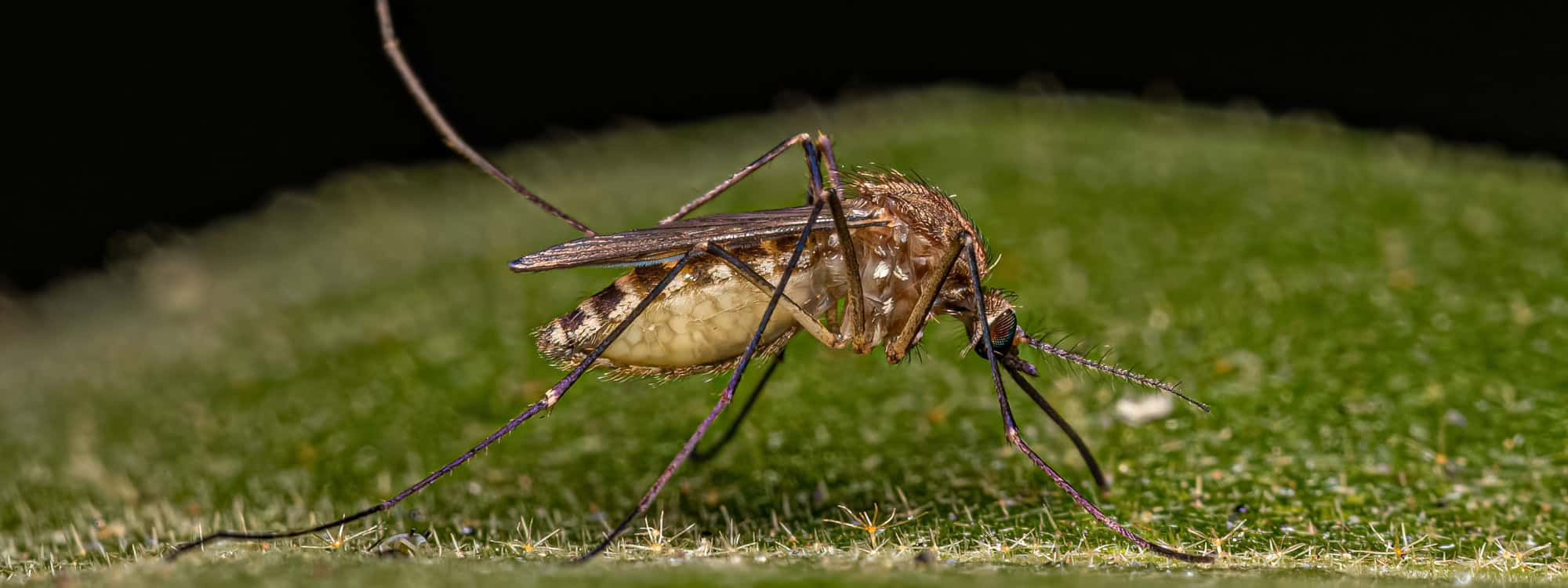Culex Mosquitoes
Identification: Culex mosquitoes are medium-sized insects, generally measuring between 4 to 10 mm in length. They are characterized by their brownish or grayish coloration, with a distinctively patterned scutum (the top of the thorax) often marked by fine, scale-like structures. Unlike Aedes mosquitoes, Culex mosquitoes have less conspicuous markings and are distinguished by their more robust, less slender legs. Their bite is typically less aggressive compared to Aedes, but still can be irritating and may transmit diseases.
Habitat: In Muskoka, Culex mosquitoes prefer larger, more permanent water bodies for breeding. They are commonly found in slow-moving or stagnant water sources such as ponds, marshes, and drainage ditches. These mosquitoes also utilize containers and poorly maintained swimming pools as breeding sites. Their adaptability to various water environments allows them to be prevalent in both urban and rural settings.
Diet: Female Culex mosquitoes require blood meals for the development of their eggs, similarly to Aedes mosquitoes. They feed on the blood of birds, mammals, and occasionally reptiles. Both male and female Culex mosquitoes sustain themselves on nectar and plant juices. Their feeding habits are influenced by their reproductive cycle, and they are known to be more active during dusk and nighttime hours.
Behavior: Culex mosquitoes are primarily nocturnal and are most active during the evening and night. They are less aggressive in their feeding behavior compared to Aedes mosquitoes, but their bites can still cause discomfort and itching. Culex mosquitoes are vectors for several diseases, including West Nile virus and lymphatic filariasis. Their activity patterns and disease transmission capabilities make them an important focus for mosquito control efforts.
Prevention: To prevent Culex mosquito infestations, it’s essential to manage and eliminate potential breeding sites. This involves regular maintenance of water features such as ponds and ditches, and ensuring that containers that hold water are covered or emptied. Utilizing mosquito repellents, installing window and door screens, and employing insecticides in targeted areas can help mitigate mosquito activity.
Control: Controlling Culex mosquitoes involves a multifaceted approach, combining source reduction with targeted treatments. Eliminating or treating stagnant water sources with larvicides is crucial for managing mosquito larvae. Additionally, applying adulticides can help reduce the population of adult mosquitoes. Regular monitoring and ongoing maintenance are essential to minimize their impact and maintain a comfortable outdoor environment.
For effective Culex mosquito control, Bug Free Muskoka’s Mosquito Control program offers seasonal solutions from May to September, which include comprehensive inspections, source reduction, and perimeter barrier treatments every 21 days. Options for organic and no-spray treatments are also available, providing effective and safe protection for your outdoor spaces. Bug Free Muskoka ensures a more comfortable and mosquito-free environment for you and your family.

